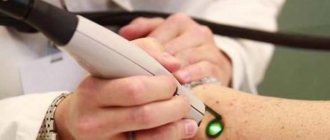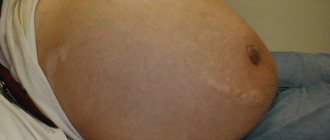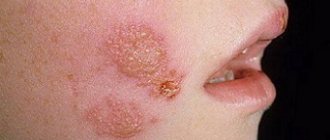Last update: 02/21/2021
Animal allergies are considered one of the most common forms of allergic reactions in the world. Research shows that the number of people suffering from allergies to animal hair, dander, feathers, fluff, saliva, excrement and sebaceous gland secretions is increasing every year.
Today, the number of people suffering from such a reaction ranges from 11 to 76.5%, depending on where they live. A form of allergy to animals is especially common in children, since the child’s immune system is very vulnerable, and the child’s body is more susceptible to sensitivity to allergens than an adult.
Causes
Antigens that provoke an immunological reaction are contained in the scales of skin, feathers, and biological fluids of animals.
Concentrating in the air, settling on carpets, walls and furniture, these microscopic particles enter the respiratory tract, and even after contact with the animal is interrupted, they can cause an allergic reaction. Parasites that live on the skin of animals can also be a source of irritation. In this case, after the animal is treated, the owner’s allergy may disappear. Allergies can be caused by both domestic and farm animals. Even the gender of the animal matters: atypical immune reactions to cats are more common than to cats.
Treatment
Doctors use the following medications to treat allergic conditions:
- antihistamines;
- enterosorbents;
- corticosteroids;
- decongestants.
Antihistamines: Tavegil, Claritin, Diphenhydramine.
Corticosteroids are especially effective for allergic symptoms, however, they are not safe. The drugs have a number of side effects and can only be prescribed by a specialist who will tell you how allergies to cats manifest in children and how to help your child at home.
Symptoms
Typical symptoms for an allergy to animal waste products are:
- sneezing and nasal congestion,
- lacrimation,
- itching and redness of the eyes,
- sore throat, dry cough,
- headache,
- swelling of the mucous membranes of the upper respiratory tract,
- bronchospasm, difficulty breathing.
The manifestation of an allergic reaction may be even more pronounced if a pet bites, licks or scratches an allergic person. In some patients, the reaction on the skin is most pronounced - it can look like urticaria, dermatitis in places of contact with the animal.
Those suffering from special sensitivity of the body may experience an acute immune reaction even when communicating with a person who has a pet or has simply been in contact with it, since particles of fur, skin or saliva remain on clothing.
What to do to leave your pet at home
The first rule is to close the doors to the nursery, where the child spends most of his time. Another good method would be to use an air purifier and constantly clean the room.
Please remember that animal fur is very sticky. If the decision to leave your pet at home has been made, it is best to completely clean the room and throw out old furniture and carpeting.
Washing your pet every week will reduce the presence of allergens in the air, but is of questionable value in reducing the child's symptoms.
It is necessary to clean the pet of dandruff (skin particles), and also clean its oral cavity, removing all rot from the teeth.
Before deciding to follow such complex preventive measures to leave the animal at home, you need to know that there are pets that do not cause allergies in children.
Children's animal allergies
In children, allergic reactions are often confused with other diseases.
A child cannot always talk about his feelings and may not attach importance to the fact that he felt bad after petting a cat on the street. If parents have not noticed the manifestations of allergies before, then the symptoms that appear can easily be attributed to viral or bacterial conjunctivitis, ARVI, bronchitis or other respiratory pathology. When exposed to an irritating substance, a baby becomes restless, tearful, sleeps poorly, and the skin becomes covered with rashes that are localized on the scalp, face and neck, in the folds of the elbows and knees, and in the buttocks area. Often, ulcers and weeping eczema form in the affected areas. The disease is also called atopic dermatitis.
Allergies are dangerous due to their complications, among which the worst are angioedema and anaphylactic shock, which block the breathing process and can be fatal. If parents observe even the slightest swelling of the mucous membranes in their baby, they should immediately consult a doctor.
Prevention
Of course, the best solution would be complete isolation from the allergen. But if you are not ready to part with your pet, the following measures will help minimize contact with the irritant protein:
- daily wet cleaning;
- daily ventilation of the room, especially before bedtime;
- washing hands after contact with animals;
- using an air purifier;
- Do not allow animals into the room of an allergic person.
If you have any questions, please make an appointment. During a personal conversation, the doctor will answer them and tell you whether cats do not cause allergies. Registration takes place by phone and online.
Related services: Pediatric allergology
Diagnostics
Differential diagnosis of this type of allergy is carried out together with its other types.
Diagnostic measures include a clinical analysis of blood and urine, blood biochemistry, allergy tests, provocative tests to identify the allergen, determination of sensitized lymphocytes to those breeds of animals with which a person has come into contact.
A general blood test allows you to see changes in the erythrocyte sedimentation rate, which will make you suspect an inflammatory process that may be caused by an allergy. Tests for immunoglobulin E can detect its significant increase, which indicates an anaphylactic type of reaction in the body.
The most effective tests for diagnosing animal protein allergies are the PRIK and patch tests. The first is carried out by injection, the second - by the “application” method - applying a piece of fabric impregnated with an allergen to the skin.
Clinical researches
The conducted clinical study proves the high efficiency, safety and tolerability of products for daily skin care of children with mild and moderate forms of atopic dermatitis and during remission, accompanied by a decrease in the quality of life of patients. As a result of therapy, a decrease in the activity of the inflammatory process, a decrease in dryness, itching and flaking was noted.
For example, the following has been clinically proven:
- Emulsion "La-Cri" moisturizes and nourishes the skin, relieves itching and irritation, soothes and restores the skin.
- Cream "La-Cri" for dry skin eliminates dryness and flaking, retains the skin's own moisture, protects the skin from wind and cold
- La-Cri cream for sensitive skin reduces itching and irritation, relieves skin redness, moisturizes and gently cares for the skin.
Sources:
- Sukolin Gennady Ivanovich, Clinical dermatology. A short guide to the diagnosis and treatment of dermatoses, Notabene, 2017
- Rodionov A.N., Zaslavsky D.V., Sydikov A.A. Edited by Professor A.N. Rodionova, Dermatology: an illustrated guide to clinical diagnostics according to Professor Rodionov A.N., M.: Granitsa. 2022.
- Churolinov Petr, Herbal medicine in dermatology and cosmetics, Medicine and physical education, 1979
How to treat animal allergies
The first rule in the fight against animal allergies is the elimination of the allergen - that is, the exclusion of contact with it by the sick person. Such extreme measures are always painful for both the owner and the pet. Therefore, if the allergy does not manifest itself too critically - with swelling, difficulty breathing - you can try “natural hyposensitization” - perhaps the body will soon get used to the new substance and stop reacting so sharply to it. To minimize the effect of the allergen, you can use special anti-allergenic shampoos for pets.
To relieve an acute reaction, regardless of whether the patient is an adult or a child, antihistamines are prescribed, which have a quick effect and a short duration of action. To relieve symptoms, inhalers, eye and nasal drops, and local remedies - ointments, creams - are used.
To treat a specific type of disease, it is necessary to select the medicine individually, taking into account the severity of the reaction, duration and frequency of manifestation. It is worth understanding that taking medications will not cure allergies forever, but will only alleviate the patient’s condition. To get rid of the disease, more serious measures are needed. In particular, allergen-specific immunotherapy is used for treatment. This is a course of subcutaneous injections of purified allergen, which lasts up to six months. In this way, we help the body adapt to contact with the allergen, and over time it stops reacting sharply to it. ASIT allows you to achieve long-term remission - up to several years. Obviously, this method is not indicated for everyone, and requires under the close supervision of the attending physician.
Publications in the media
Allergy to pets: features of diagnosis and treatment
Allergy to pets is a pressing problem of modern allergology and clinical immunology: every year foreign scientific journals publish 3–5 original articles devoted to the diagnosis, treatment and prevention of this phenomenon in patients with allergic diseases. Scientists attribute the increase in the prevalence of allergies to pets to three main reasons: a significant increase in families with animals at home (30–80% in Europe and the USA); close contact of a person with agriculture/agribusiness and his professional activities. Of no less importance is the significant increase in the number of rodents everywhere.
In Russia, targeted scientific studies of allergies to pets have not been carried out, only an article by Gusareva E. S. et al. received wide publicity in foreign literature [1]. The authors were the first to report in an international scientific journal data on allergic sensitization in patients with bronchial asthma (BA) living in Siberia (Tomsk and Tyumen): it turned out that the majority of them - 57.3% - had sensitization to a major cat allergen; other important allergens were house dust mites and dog allergens (30%). A recent joint study by Finnish and Russian scientists found that in Russia (Svetogorsk), the risk of developing atopic asthma in schoolchildren aged 7–16 years was significantly associated with the presence of cats at home and contact with them in postnatal and early age, while in In Finland (Imatra), children were more likely to have contact with dogs, and this factor was preventive in the development of asthma [2]. However, according to the researchers, constant exposure to pet allergens from an early age increases the risk of asthma.
Is the expected chain correct: “allergen exposure ® sensitization ® atopy ® allergic disease”? Analysis of numerous literature data shows that this is not always the case.
Scientists draw attention to the need for a correct methodological approach in studying such aspects of allergies to pets, such as the influence of the level and duration of exposure to animal allergens (including in utero) on human health/disease outcome, and hereditary predisposition. No less important is the question of the relationship between exposure to animal allergens and the development of specific sensitization; One should also take into account the level of allergens in public places and homes where there are no cats, for example, but there may be a sufficient amount of their allergenic proteins that can cause clinical symptoms in sensitized individuals. Finally, issues of identifying and confirming allergies to pets require clarification. After all, it is known that the diagnosis of any allergic disease is highly probable with a proven connection between the medical history, the presence of symptoms, when there is exposure to allergens, and positive allergy tests (in vivo and/or in vitro). It is clear that the doctor must have highly sensitive tests, and if the diagnosis is confirmed, the ability to prescribe effective therapy to the patient.
Let us briefly present some features of the epidemiology, therapy and prevention of allergies to pets according to our own and foreign data. Let us remind you that it is necessary to distinguish between such concepts as the effect of early/late or constant/irregular exposure to allergens, the influence of allergen exposure on sensitization, sensitization as a risk of developing allergic diseases, etc. However, we do not intend in this article to conduct an in-depth review of the above issues.
Pet Allergy Clinic
As is known, allergy symptoms can appear within 5 minutes after contact with a pet; as a rule, they increase over time and reach a maximum after 3 hours. Immediate and delayed hypersensitivity reactions occur in sensitized individuals in the form of such clinical manifestations as allergic conjunctivitis, allergic rhinitis, rhinoconjunctival syndrome; on the skin side - urticaria (urticaria) at the site of contact with the animal, itching, skin hyperemia. In sensitized individuals with asthma, as a rule, inhalation of animal allergens can cause cough, shortness of breath, and bronchospasm within 20–30 minutes; sometimes the hypersensitivity reaction occurs in a delayed manner - a decrease in bronchial patency begins in patients after 3-4 hours. Rarely (in 2% of cases) asthmatic symptoms are observed without combination with nasal symptoms.
The appearance of clinical allergy symptoms is not always associated with direct contact with a pet and does not linearly depend on the concentration of allergens: in particular, the clothing of cat owners is a means of transferring the main allergen (Fel d 1) to an environment where there are no cats. Even in this case, an attack of asthma may develop in sensitized people. Passive transfer of cat allergens is also possible through the hair and shoes of cat owners. Cat allergens are found on airplanes, buses, schools and kindergartens. There is an opinion that the gender, number and type of cats plays a role.
What is an allergen?
The most powerful allergens are cat allergens. To date, more than 12 cat allergens have been described. The so-called major allergen - Fel d 1 m protein - is found on the skin and epithelium of the skin, as well as in the secretions of the sebaceous glands, urine, but not in the saliva of cats. More than 80% of patients with cat allergies have IgE antibodies to this particular glycoprotein. Due to its small particle size (3-4 microns), Fel d 1 is easily airborne and, if inhaled, causes coughing/wheezing in sensitized individuals. Males have a higher Fel d 1 content than females or castrated males. About 25% of people with cat allergies are also sensitive to feline albumin, Fel d 2, which is found in their serum, dander and saliva; 12% are sensitized to urine.
People with IgE sensitization to Fel d 1 are cross-allergic to other animal species (Siberian tiger, lion, jaguar, leopard), as well as dogs and horses. A cat-pork syndrome has been described, possibly mediated by a cross-reaction between the serum albumins of these animals. There are also cases of exercise-induced anaphylaxis after eating pork or beef.
The main dog allergens - Can f 1 and Can f 2 - are isolated from dog dander and hair. Animal dander is not only hair, but also a complex complex of other allergens. So, to diagnose dog allergies, it is important to identify three allergens: dander, epithelium and serum albumin. Animal epithelium for diagnostic purposes is obtained by scraping the epithelial layer of the skin.
Prevalence of pet allergies
The most common domestic animals that cause allergies are cats and dogs; cases of severe allergic reactions have been described after contact with rarer animals.
In the general population, ~15% of Swedish residents aged 20–45 years are allergic to cats, and in the majority of them, exposure to cat allergens causes clinical symptoms of AD. In Turkey, Pakistan and Cyprus, where traditionally few families keep cats at home, there has also been an increase in the number of patients with allergies to pets.
In 2007, we found that ~30% of Moscow schoolchildren (age 7–18 years) had a positive allergy history; including 6.6% indicated symptoms of allergic rhinitis, and more than half of them reacted with the appearance/intensification of allergy symptoms after contact with pets (mainly cats) [3].
Among patients with allergic rhinitis and asthma, an extremely high prevalence of sensitization to epidermal allergens is reported: according to various foreign authors, more than 60–70% [4].
According to Guseinova E.A., out of 130 patients with respiratory allergies (BA, allergic rhinitis) living in Kolomna, 46.7% of children and 42.8% of adults showed sensitization to epidermal allergens (cat). We also identified a high incidence of allergies to pets among children with asthma in Moscow. In particular, 84% of children aged 4–18 years suffering from asthma had various clinical manifestations of allergies after contact with a cat and/or dog (
). It should be noted that in 14 families (20.6%) parents continued to keep animals at home (a cat in 12, a dog in 2), despite children diagnosed with asthma and/or allergic rhinitis being allergic to them.
In 26 children with asthma, we studied the hereditary burden of allergies to pets (mother, father, other family members) and identified such a connection in 50% of cases, mainly on the paternal side (
).
Features of diagnosing allergies to pets
To diagnose allergies to pets, skin prick tests (prick test, abroad) or prick tests (in Russia) are used. Cat hair allergen is used as a standard allergen for skin testing in Russia. According to the instructions, epidermal allergen from cat hair is a water-salt solution of protein-polysaccharide complexes isolated from animal hair and dander. Note that abroad, for this purpose, they mainly use an extract from the “cat epithelium” (dog), as well as the dander of these animals.
It is believed that with a papule diameter of 6 mm on the cat epithelium, there is a high probability that the patient can be diagnosed with an allergy to the cat [5]. There is usually no need to test intradermally.
The determination of specific IgE antibodies to animal allergens is of important diagnostic value, especially in all cases where there are contraindications for skin testing. It has been proven that these tests are practically comparable, in particular in 100–94% of cases when comparing the PharmaciaCAPsystem test system and cat epithelial skin tests [6].
Other tests (nasal/bronchoprovocation test with feline epithelium or environmental exposure chamber tests) have scientific interest and aim to study the pathogenesis of diseases, as well as evaluate the effectiveness of therapy.
IN
A comparative description of the prevalence of sensitization to cat allergens according to skin tests using an allergen from cat fur and epithelium (Allergopharma) in parallel in children with asthma and allergic rhinitis is presented.
As can be seen from the presented material, the diagnostic significance of the allergen from the cat epithelium is significantly higher than that of the cat hair allergen (in particular, positive results were obtained in 55% of patients with asthma, while sensitization to cat hair was detected in only 11% of them). This fact should be taken into account when diagnosing cat sensitization in patients. Correlation rank analysis (Spearman, Kendall, gamma correlation method) did not reveal a correlation between these two diagnostic tests (p = 0.262; p = 0.153, p = 0.153).
How is it possible to effectively treat pet allergies?
There is evidence that sensitization can develop in response to exposure to even low levels of allergens. To reduce the risk of developing an allergic disease, the patient is recommended to exclude/reduce contact with the allergen (direct, passive).
All patients with allergies to pets should be considered at risk for developing a severe allergic reaction (deaths from asthma attacks have been described after resuming contact with pets). According to foreign scientists, the best recommendation for all patients with such allergies is to completely avoid contact with animals if possible.
A study was recently conducted in Germany in which scientists directly linked the presence/absence of animals at home with the level of education of parents of sick children.
Physical methods aimed at reducing the content of animal allergens in the air are absolutely not justified: it has been established that after washing cats, the Fel d 1 level returns to its original level within 24 hours [7].
Recently, a unique drug for the treatment and prevention of allergic rhinitis, Nazaval, was registered in Russia. This is a microdispersed cellulose-based powder, which, after spraying, forms a transparent gel-like protective layer on the nasal mucosa, lining the nasal cavity. This creates a natural barrier against the penetration of aeroallergens (pollen, epidermal allergens of animals and birds, fungal, insect and cockroach allergens, chemicals, bacteria and viruses) and pollutants into the body. Studies have shown that Nazaval is an effective and safe means of preventing and treating allergic rhinitis in adults, children and pregnant women [8]. For patients with allergies to pets, the drug should be prescribed before expected contact, as well as for preventive and therapeutic purposes, 1 instillation 3 times a day for a long time. Given the fact that the arsenal of topical drugs for the treatment of allergic rhinitis includes only a practically wide range of hormones, Nazaval may represent an important alternative to these drugs in terms of safety.
In the treatment of allergies to pets, all antiallergic drugs are used, including antihistamines, as well as leukotriene receptor antagonists. Abroad, allergy vaccination with cat epithelium (less often with dog allergen) has been successfully used for more than a decade [9]. In the international consensus document on specific immunotherapy, the effectiveness of treatment with cat allergen is assessed according to the criteria of evidence-based medicine as level 1a [10]. Recently, reports have appeared assessing the effectiveness and safety of allergy vaccination with recombinant cat allergen.
Conclusion
Clinical practice shows: doctors (and patients themselves) underestimate the importance of sensitization to animal allergens, and measures to prevent exposure to animal allergens are insufficiently applied. In addition, to correctly interpret diagnostic results, it is necessary to use more informative tests and methods. Therapy for such patients also requires correction taking into account the achievements of modern allergology and clinical immunology.
Cure allergies at VERAMED
Experienced allergists and immunologists conduct consultations at the VERAMED clinics in Odintsovo and Zvenigorod. Here you can take a full range of necessary tests, quickly get results from our own laboratory, and do allergy tests under the supervision of a doctor. Also, medical centers provide treatment for allergy sufferers using the ASIT method. You can find out more about this, as well as ask questions about prices, appointment times and specialists at VERAMED clinics by calling a single phone number.
Think about your health now. Don't put off visiting your doctor!
Are there hypoallergenic animals?
Allergies can occur to absolutely any animal, and hypoallergenic animals are a myth. But there are pets that can provoke allergies less often than others.
A turtle can be a good pet option for an allergy sufferer. She has no fur, the amount of saliva and sweat is insignificant, and she is very easy to care for. But its waste products (feces) can also cause unwanted allergic reactions, so it would be ideal if a person who is not susceptible to allergies cleans up after it.
Cute animals like chinchillas are also quite hypoallergenic, because they have neither sebaceous nor sweat glands. Therefore, a chinchilla is an almost ideal option for allergy sufferers. “Almost” because it is very rare, but the reaction to chinchillas occurs.
Hairless guinea pigs are also a good option.
A Bichon Frize dog may also be suitable for a person with allergies. Despite the fact that their fur is thick and dense, they shed very little of it. But the Yorkshire Terrier, contrary to popular belief, can cause allergies with the same probability as dogs of other breeds.
Good news for allergy sufferers!
In July 2022, scientists from the Purina research division, together with allergists from the John Washington University School of Medicine, announced a new additive to cat food that, with long-term use, deprives the animal of the ability to cause allergies in humans. The effectiveness of the supplement was confirmed in laboratory tests and in experiments with cats and people with allergies. Perhaps soon the new food will become a truly effective solution for those who love cats, but cannot yet be near them.
In any case, when getting a pet, you need to remember that this is for many years and carefully weigh your options!
Health to you and your pets! Department of Dermatology ICC "PiK"










